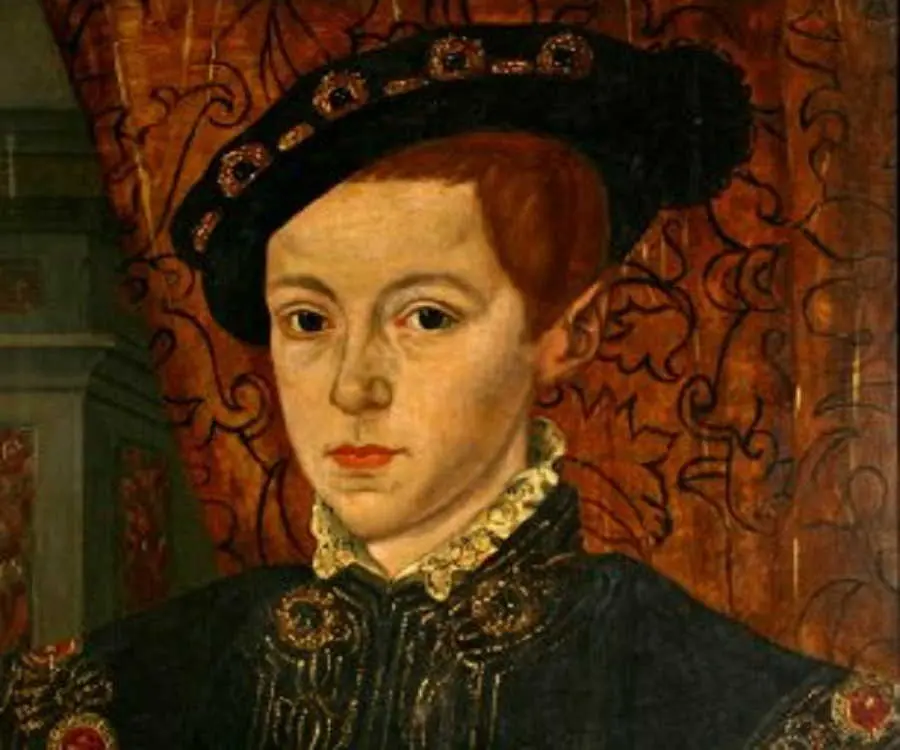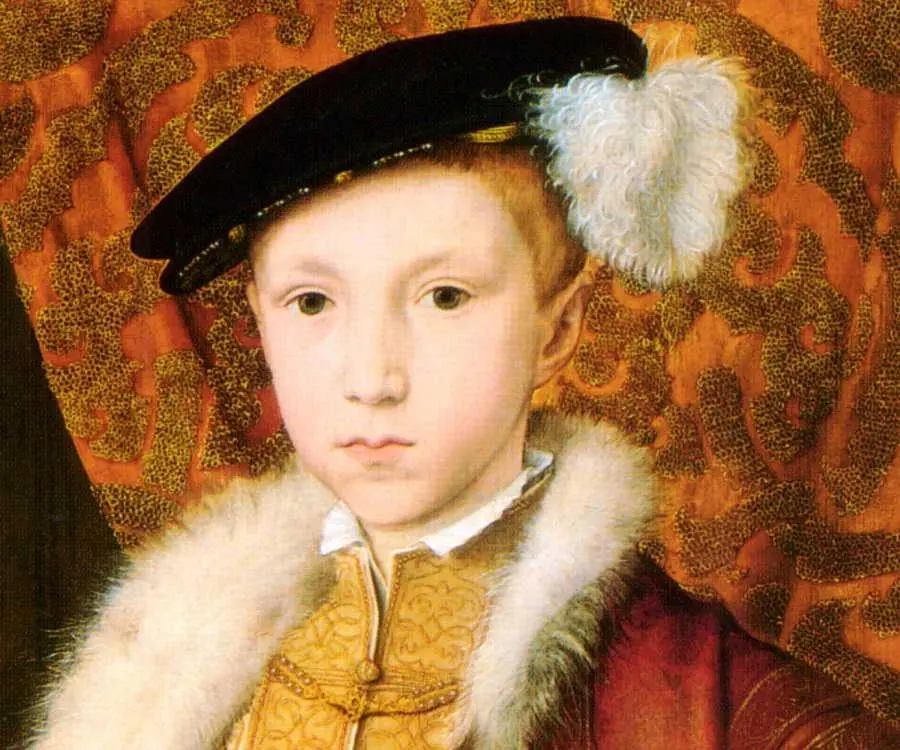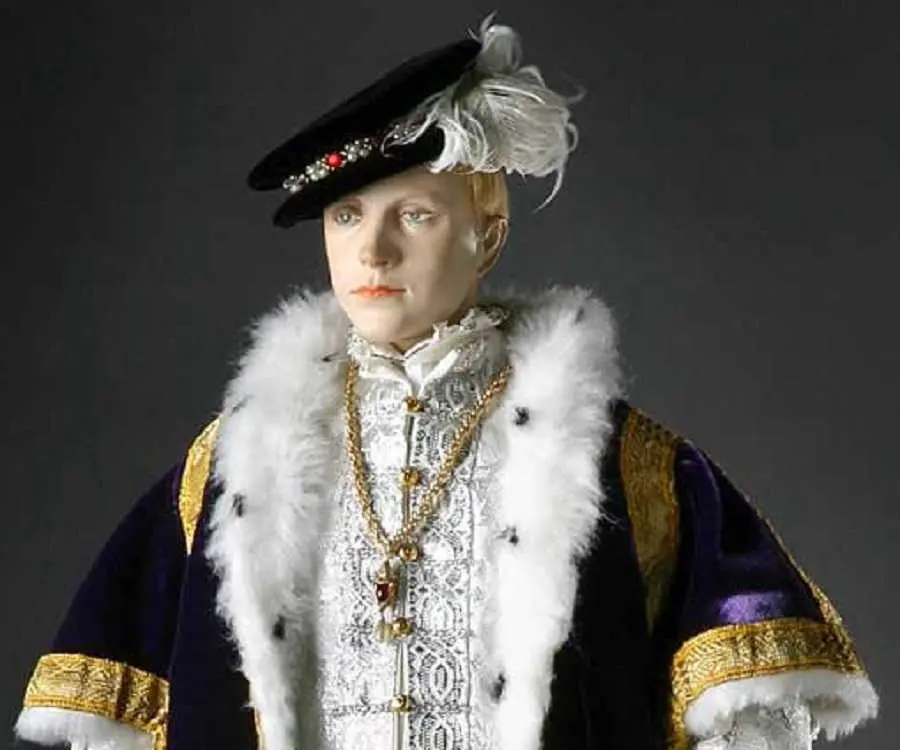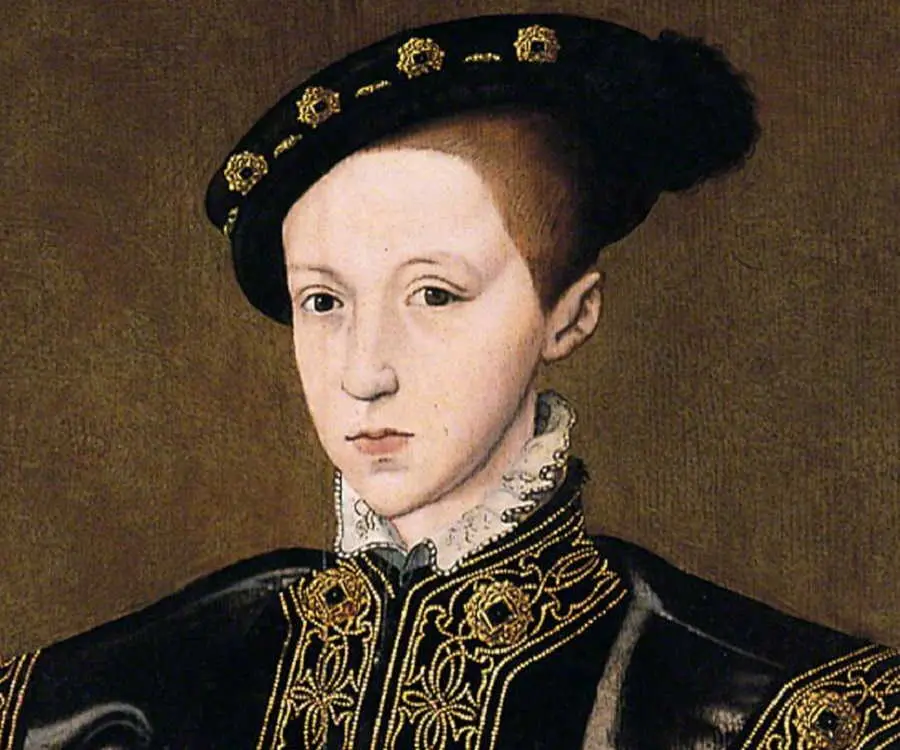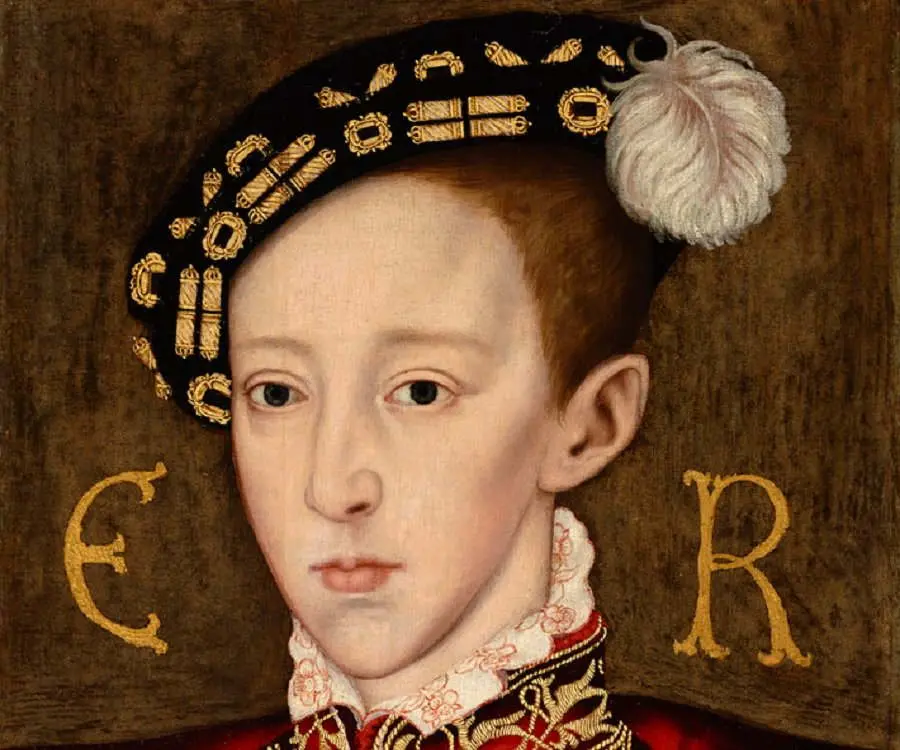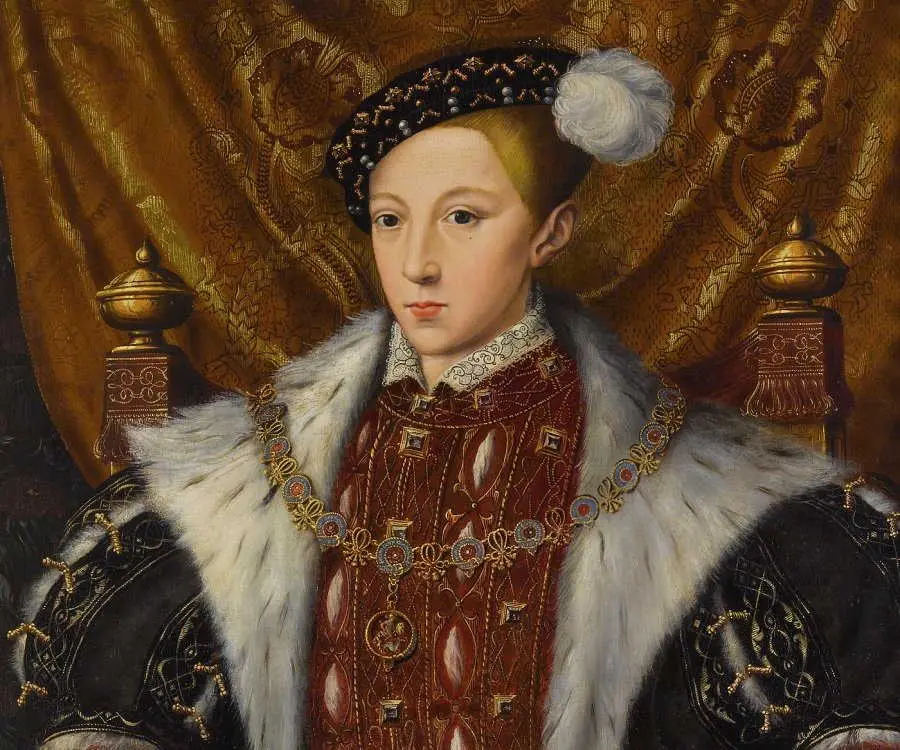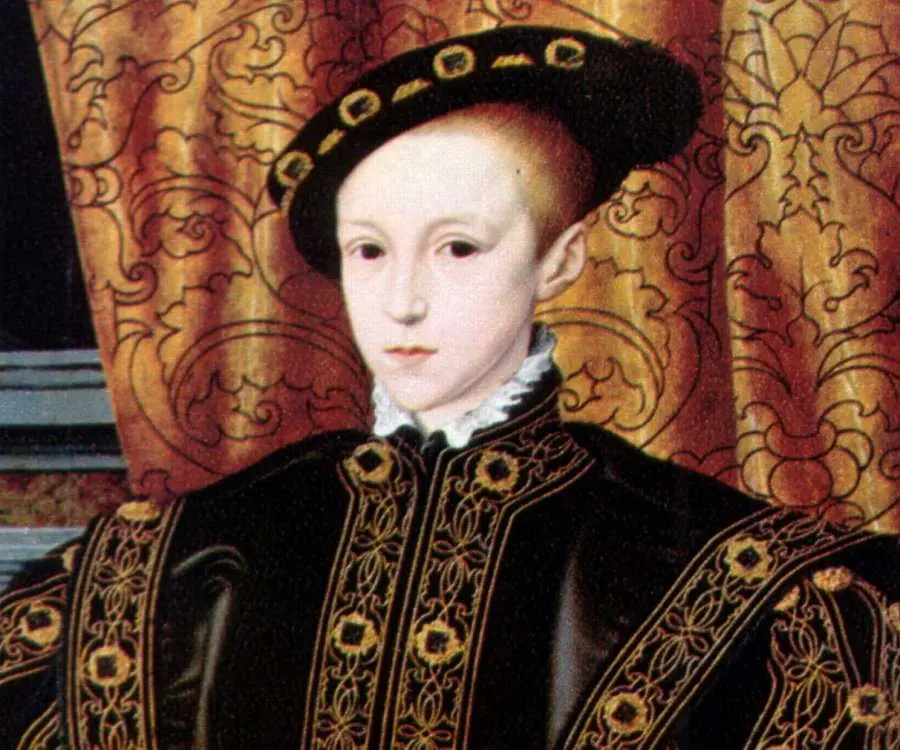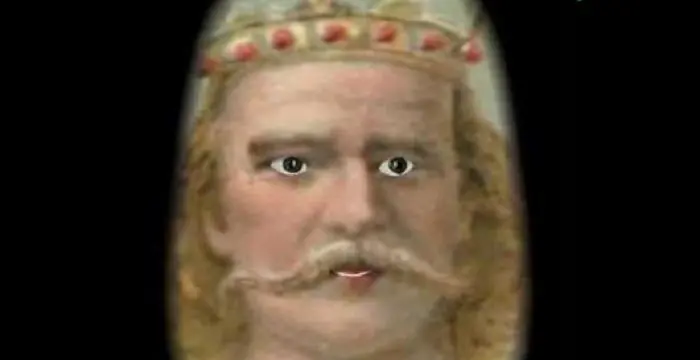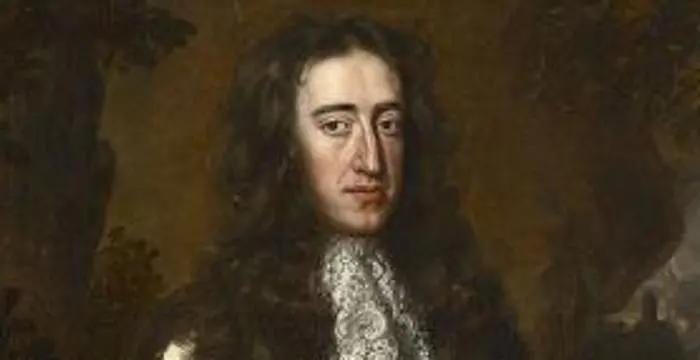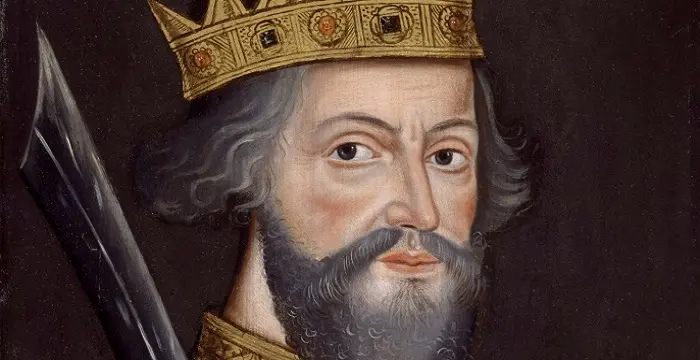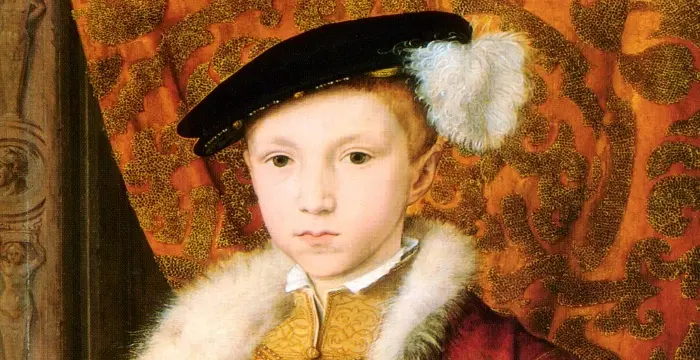
Edward VI of England - King of England, Career and Childhood
Edward VI of England's Personal Details
Edward VI served as the King of England, from 1547 until his death in 1553
| Information | Detail |
|---|---|
| Birthday | October 12, 1537 |
| Died on | July 6, 1553 |
| Nationality | British |
| Famous | Historical Personalities, Emperors & Kings, Emperors, King of England, Kings |
| Siblings | Elizabeth I of England, Mary I of England |
| Known as | Eduard al VI-lea |
| Founder / Co-Founder |
|
| Cause of death |
|
| Birth Place | Hampton Court Palace |
| Religion | Protestantism |
| Gender | Male |
| Father | Henry VIII of England |
| Mother | Jane Seymour |
| Sun Sign | Libra |
| Born in | Hampton Court Palace |
| Famous as | King of England |
| Died at Age | 15 |
// Famous Kings
Sundiata Keita
Sundiata Keita was the founder of the Mali Empire in West Africa. This biography profiles his childhood, early life, struggles, founding of empire, rule, administration, achievements and also gives some fun facts.
Ashoka
Ashoka was the third emperor of the Mauryan Dynasty and ruled almost the entire Indian subcontinent. This biography profiles his childhood, life, reign, achievements and timeline
Murad IV
Murad IV was one of the mighty Sultans in the history of the Ottoman Empire. This biography profiles his childhood, family, accession, rule, administration and timeline.
Edward VI of England's photo
Who is Edward VI of England?
King Edward VI served as the King of England for six years, from 1547 until his death in 1553. The only son of King Henry VIII from his third wife Jane Seymour, Edward’s accession as next King of England was obvious right from the time of his birth, surpassing his half-sisters, Mary and Elizabeth. The death of King Henry VIII led Edward to take up the coveted throne at the tender age of nine. Since he was extremely young to reign in real, a Regency Council was set up to act on his behalf until he reached the age of maturity. The Council was first led by his uncle, Edward Seymour, 1st Duke of Somerset and later by John Dudley, 1st Earl of Warwick and Duke of Northumberland. Though King Edward himself did not reign, much of the policies assumed during these six years were after his approval. It was under King Edward VI’s reign that Protestantism was established, transferring the Church from the Roman Catholic liturgy. Also, his reign led to the introduction of the Book of Common Prayer, the Ordinal of 1550, and Cranmer's Forty-two Articles which has formed the basis for English Church practices till date. Intellectually bright and talented, his health had constantly been a matter of contention. In 1553, he died from tuberculosis.
// Famous Emperors
Sundiata Keita
Sundiata Keita was the founder of the Mali Empire in West Africa. This biography profiles his childhood, early life, struggles, founding of empire, rule, administration, achievements and also gives some fun facts.
Ashoka
Ashoka was the third emperor of the Mauryan Dynasty and ruled almost the entire Indian subcontinent. This biography profiles his childhood, life, reign, achievements and timeline
Murad IV
Murad IV was one of the mighty Sultans in the history of the Ottoman Empire. This biography profiles his childhood, family, accession, rule, administration and timeline.
Childhood & Early Life
Edward VI was born on October 12, 1537 in Hampton Court palace, Middlesex to King Henry VIII and his third wife, Jane Seymour. At the time of his birth, he became the undisputed heir to the throne, surpassing two stepsisters, Mary and Elizabeth I.
Edward was christened on October 15 and was proclaimed with the title of Duke of Cornwall and Earl of Chester. Sadly, his mother passed away a week after his christening due to postnatal complications.
Following Jane Seymour’s death, Edward was put under the care of several mistresses. He attained his education under the tutelage of Richard Cox and John Cheke. Other than academic studies, young Edward developed musical skills as well.
Since an early age, Edward was fascinated with military arts. He was often spotted sporting gold dagger with a jewelled hilt just like the one worn by his father, King Henry VIII.
Accession & Reign
Upon his father’s death on January 28, 1547, the nine-year old Edward became the heir apparent to the throne. He was anointed and crowned as the King of England on February 20, 1547 at Westminster Abbey.
Conferring to Henry VIII’s will, King Edward had a Council of Regency to fall back on, comprising of 16 executors and 12 assistants to executors, who would rule on His behalf.
King Henry VIII had not mentioned the appointment of a Protector in his will. However, the members of the Regency collaterally appointed King Edward’s uncle, Edward Seymour, 1st Earl of Hertford as the Lord Protector of the Realm, Governor of the King’s Person and Duke of Somerset.
Somerset’s military success in Scotland and France further reinforced his appointment as the Protector. In March 1547, he also secured from King Edward the monarchical rights to appoint members to the Privy Council.
The only hitch in Somerset’s autocratic rule was his younger brother Thomas Seymour who was hell bent for power. However, due to the latter’s involvement with Lady Elizabeth, he was beheaded in 1549.
A competent military campaigner, Somerset’s initially successes did not go any further after his appointment as the Protector. Contrastingly, he failed in the military pursuits against Scotland as his conquests became increasingly unrealistic. He had to withdraw from Scotland following a French attack in 1549.
Along with Archbishop of Canterbury, Thomas Crammer, Seymour was intent on converting England into a Protestant state. For the same, he even issued an English Prayer Book in 1549 under an Act of Uniformity which enforced English people to follow it. The new Prayer Book excluded aspects of Roman Catholic practices and in turn allowed the marriage of the clergy.
It was the imposition of the Prayer Book that led to rebellion in Cornwall and Devon in the summer of 1549. Furthermore, the upheaval instigated Kett’s rebellion against land enclosures in Norfolk. Adding to the turmoil was the French declaration of war on England.
Though militarily proficient, Seymour was too liberal to deal with the Kett’s rebellion. It was John Dudley, Earl of Warwick who came in and supressed the Norfolk rebellion.
The events of 1549 marked a colossal failure of the government and Seymour was held responsible for the same, being a Protector. Isolated by the Council, he was arrested in October 1549. Though Seymour was eventually released and re-admitted into the Council, in 1552, he was executed on charges of felony.
In 1550, Seymour was succeeded by Dudley as the leader of the Council. Dudley was made Duke of Northumberland in 1551. Unlike Seymour, Dudley set up a working council which he primarily used to legitimize his actions. Most of the members of the council were people from his faction; this enabled him to gain complete control over the council.
Unlike Seymour’s, Dudley’s war policies earned him much criticism for being weak and puny. He signed a peace treaty with France, upon realizing the lack of funds to support the cost of war. Tempted by quick profit, Dudley debased the coinage which was eventually restored by the expert Thomas Gresham
Following King Edward’s illness in 1553, succession became a major point of contention. According to the Succession’s Act, Mary was the next rightful heir to the throne. However, King Edward opposed it by making a will in which he passed over the claim to the throne from his half sisters, Mary and Elizabeth to his first cousin, Lady Jane Grey who in turn had married Dudley’s younger son.
Major Works
Edward's reign saw radical progress in the Reformation. In his six years of supremacy, the Church transferred from an essentially Roman Catholic liturgy to a structure that was based on Protestantism. Also, it was under him that the Book of Common Prayer, the Ordinal of 1550, and Cranmer's Forty-two Articles were introduced, all of which form the basis of the English Church practices till date.
Personal Life & Legacy
In 1543, Edward was first betrothed to Mary, Queen of Scots by his father, King Henry VIII, as a measure to seal peace between England and Scotland after signing of the Treaty of Greenwich which abandoned the alliance between Scotland and France. However, with Scots repudiating the treaty, the betrothal was also rejected.
In 1551, King Edward was betrothed to Elisabeth of Valois, daughter of King Henry II.
In January 1553, King Edward became increasingly sick with fever and cough which only worsened with time. He made his final public appearance on July 1, 1553.
On July 6, 1553, he breathed his last at Greenwich Palace. He was only 15 then. On August 8, he was buried in Henry VII Lady Chapel at Westminster Abbey with the last rites performed by Thomas Crammer, his confidante. Historians believe that contraction of tuberculosis led to his untimely death.
As per his will, he was succeeded by Lady Jane Grey, his cousin and wife of younger son of Duke of Northumberland. However, Jane’s reign lasted for only thirteen days after which Mary ascended the throne as the rightful heir.
Trivia
This King of England kept a journal of his reign wherein he wrote a detailed overview of his time in power.
// Famous King of England
Harold Godwinson
Harold Godwinson was an Anglo Saxon King of England in the 11th Century. Check out this biography to know about his birthday, childhood, family life, achievements and fun facts about him.
William III of England
William III was the stadtholder of the main provinces of the Dutch Republic and the king of England, Ireland, and Scotland (King William II of Scotland). Check out this biography to know more about his childhood, family, life history, etc.
William the Conqueror
William the Conqueror was the Duke of Normandy, who later became the King of England. This biography of William the Conqueror provides detailed information about his childhood, life, achievements, works & timeline
Edward VI of England biography timelines
- // 12th Oct 1537Edward VI was born on October 12, 1537 in Hampton Court palace, Middlesex to King Henry VIII and his third wife, Jane Seymour. At the time of his birth, he became the undisputed heir to the throne, surpassing two stepsisters, Mary and Elizabeth I.
- // 1543In 1543, Edward was first betrothed to Mary, Queen of Scots by his father, King Henry VIII, as a measure to seal peace between England and Scotland after signing of the Treaty of Greenwich which abandoned the alliance between Scotland and France. However, with Scots repudiating the treaty, the betrothal was also rejected.
- // 20th Feb 1547Upon his father’s death on January 28, 1547, the nine-year old Edward became the heir apparent to the throne. He was anointed and crowned as the King of England on February 20, 1547 at Westminster Abbey.
- // Mar 1547Somerset’s military success in Scotland and France further reinforced his appointment as the Protector. In March 1547, he also secured from King Edward the monarchical rights to appoint members to the Privy Council.
- // 1549The only hitch in Somerset’s autocratic rule was his younger brother Thomas Seymour who was hell bent for power. However, due to the latter’s involvement with Lady Elizabeth, he was beheaded in 1549.
- // 1549A competent military campaigner, Somerset’s initially successes did not go any further after his appointment as the Protector. Contrastingly, he failed in the military pursuits against Scotland as his conquests became increasingly unrealistic. He had to withdraw from Scotland following a French attack in 1549.
- // 1549Along with Archbishop of Canterbury, Thomas Crammer, Seymour was intent on converting England into a Protestant state. For the same, he even issued an English Prayer Book in 1549 under an Act of Uniformity which enforced English people to follow it. The new Prayer Book excluded aspects of Roman Catholic practices and in turn allowed the marriage of the clergy.
- // 1549It was the imposition of the Prayer Book that led to rebellion in Cornwall and Devon in the summer of 1549. Furthermore, the upheaval instigated Kett’s rebellion against land enclosures in Norfolk. Adding to the turmoil was the French declaration of war on England.
- // 1550 To 1551In 1550, Seymour was succeeded by Dudley as the leader of the Council. Dudley was made Duke of Northumberland in 1551. Unlike Seymour, Dudley set up a working council which he primarily used to legitimize his actions. Most of the members of the council were people from his faction; this enabled him to gain complete control over the council.
- // 1550Edward's reign saw radical progress in the Reformation. In his six years of supremacy, the Church transferred from an essentially Roman Catholic liturgy to a structure that was based on Protestantism. Also, it was under him that the Book of Common Prayer, the Ordinal of 1550, and Cranmer's Forty-two Articles were introduced, all of which form the basis of the English Church practices till date.
- // 1551In 1551, King Edward was betrothed to Elisabeth of Valois, daughter of King Henry II.
- // 1553Following King Edward’s illness in 1553, succession became a major point of contention. According to the Succession’s Act, Mary was the next rightful heir to the throne. However, King Edward opposed it by making a will in which he passed over the claim to the throne from his half sisters, Mary and Elizabeth to his first cousin, Lady Jane Grey who in turn had married Dudley’s younger son.
- // 1st Jul 1553In January 1553, King Edward became increasingly sick with fever and cough which only worsened with time. He made his final public appearance on July 1, 1553.
- // 6th Jul 1553On July 6, 1553, he breathed his last at Greenwich Palace. He was only 15 then. On August 8, he was buried in Henry VII Lady Chapel at Westminster Abbey with the last rites performed by Thomas Crammer, his confidante. Historians believe that contraction of tuberculosis led to his untimely death.
// Famous Historical Personalities
Sundiata Keita
Sundiata Keita was the founder of the Mali Empire in West Africa. This biography profiles his childhood, early life, struggles, founding of empire, rule, administration, achievements and also gives some fun facts.
Ashoka
Ashoka was the third emperor of the Mauryan Dynasty and ruled almost the entire Indian subcontinent. This biography profiles his childhood, life, reign, achievements and timeline
Jetsun Pema
Jetsun Pema is the Queen consort of Bhutan. Check out this biography to know about her childhood, family life, achievements and fun facts about her life.
Murad IV
Murad IV was one of the mighty Sultans in the history of the Ottoman Empire. This biography profiles his childhood, family, accession, rule, administration and timeline.
Xerxes I
Xerxes I (Xerxes the Great) was the fourth and the most famous king of the Archaemenid dynasty of Persia. This biography profiles his childhood, family, personal life, life history, achievements, campaigns, administration, death and other facts.
Sargon of Akkad
Sargon of Akkad, also called ‘Sargon the Great’, ‘Sarru-Kan’ and ‘Shar-Gani-Sharri’, was the founder and first king of the Akkadian Empire. This biography profiles his childhood, life, rule, administration, timeline, and gives some fun facts.
Edward VI of England's FAQ
What is Edward VI of England birthday?
Edward VI of England was born at 1537-10-12
When was Edward VI of England died?
Edward VI of England was died at 1553-07-06
Where was Edward VI of England died?
Edward VI of England was died in Palace of Placentia
Which age was Edward VI of England died?
Edward VI of England was died at age 15
Where is Edward VI of England's birth place?
Edward VI of England was born in Hampton Court Palace
What is Edward VI of England nationalities?
Edward VI of England's nationalities is British
Who is Edward VI of England siblings?
Edward VI of England's siblings is Elizabeth I of England, Mary I of England
Which company or organization was founded by Edward VI of England?
Edward VI of England was the founder/co-founder of Sherborne School, Christ's Hospital, Shrewsbury School, King Edward's School, Birmingham, King Edward's School, Witley, Bedford School, King Edward VI School, Stratford-upon-Avon, Queen Elizabeth's Community College
What is Edward VI of England's cause of dead?
Edward VI of England dead because of Tuberculosis
What is Edward VI of England's religion?
Edward VI of England's religion is Protestantism
Who is Edward VI of England's father?
Edward VI of England's father is Henry VIII of England
Who is Edward VI of England's mother?
Edward VI of England's mother is Jane Seymour
What is Edward VI of England's sun sign?
Edward VI of England is Libra
How famous is Edward VI of England?
Edward VI of England is famouse as King of England



